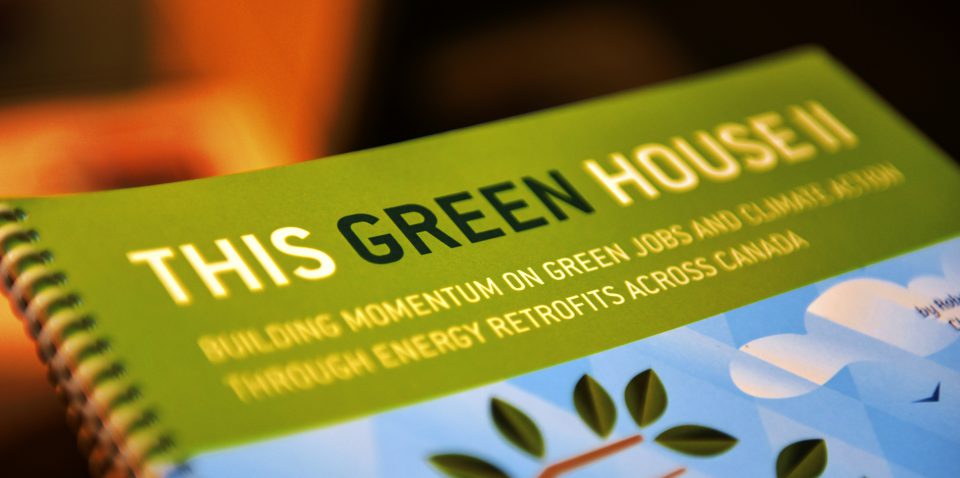Saving the planet by saving energy just got easier
November 13, 2012As our friends at Blue Green Canada have said, “If you’re a homeowner in Ontario, it just became easier to save money. Oh, and it also became easier to help the planet and to support your local economy.”
Ontario became the first Province in Canada to open the door for Municipalities to take the lead on energy efficiency retrofits.
Late last week, without fanfare, the Ontario government amended a couple pieces of legislation. In short, the amendments allow municipalities to lend homeowners money for home improvements, like adding renewable energy systems or energy efficiency upgrades. And these loans can be tied to the property, rather than the homeowner.
This may not sound like a big deal, but climate change wonks and green economy nerds have been asking for this type of mechanism for a long time. It’s a fast track to climate action.
We at the Columbia Institute could at times be considered ‘green economy nerds’, and are proud that our 2011 Research Report: This Green House: Building Fast Action for Climate Change and Green Jobs has been a vital part of this Ontario retrofits conversation. And a vital part of the discussion across Canada. We presented at the FCM Sustainability Conference in Ottawa last February and followed up with the office of the Minister of Municipal Affairs and Housing in Ontario as well as opposition members to present our findings. We’ve been part of an alternative energy conference in Saskatchewan and we’re looking forward to further opportunities to share our research.
This Green House highlights the importance of building retrofits, as the fastest and cheapest way to reduce Greenhouse Gas (GHG) emissions. And it outlines a variety of possible financing programs that make it possible for homeowners. Local Improvement Changes (LICs) are one such model, where municipalities provide low-cost financing for homeowners to pay the upfront cost of approved energy-efficiency retrofits, and participating owners repay the city over time as a special assessment on their property taxes.
Over the past few years, local governments, government associations, environmental organizations, utility companies, federal government agencies, and policy researchers have shown interest in the use of local improvement charges (LICs) to finance energy efficiency measures.
Halifax Regional Municipality has been working on a pilot initiative to finance solar water heating panels for residents, who would pay back the cost on their property bills. On the other side of the country, the City of Vancouver has partnered with VanCity Credit Union to launch a program that will allow residents to borrow up to $16,000 for home energy efficiency upgrades and repay the loan in quarterly installments to the city.
The challenge has been that if LICs are going to be part of the solution to Canada’s GHG reduction strategy, municipalities need their provincial governments to write clear enabling legislation relevant to provincial municipal government through statutes and regulations. This is the step that the Ontario government just took. The legislation changes can be viewed here.
Past research done by the Columbia Institute shows that the majority of Canadians are interested in taking action on Climate Change. And in the wake of hurricane Sandy, yearning for real action has ramped up. These legislative changes make it possible for Ontario homeowners to reduce their GHG emissions, while saving money and supporting local green jobs. It’s not a silver-bullet solution. But it’s an important piece of the puzzle, and one worth celebrating as we continue working together to address the climate crisis.
